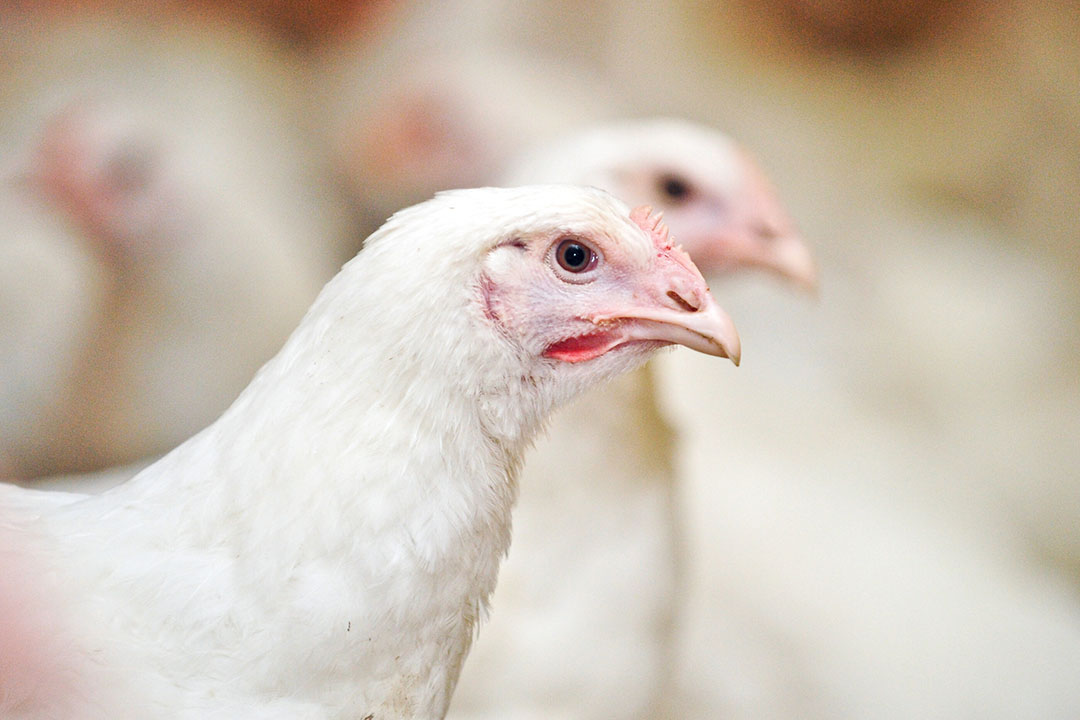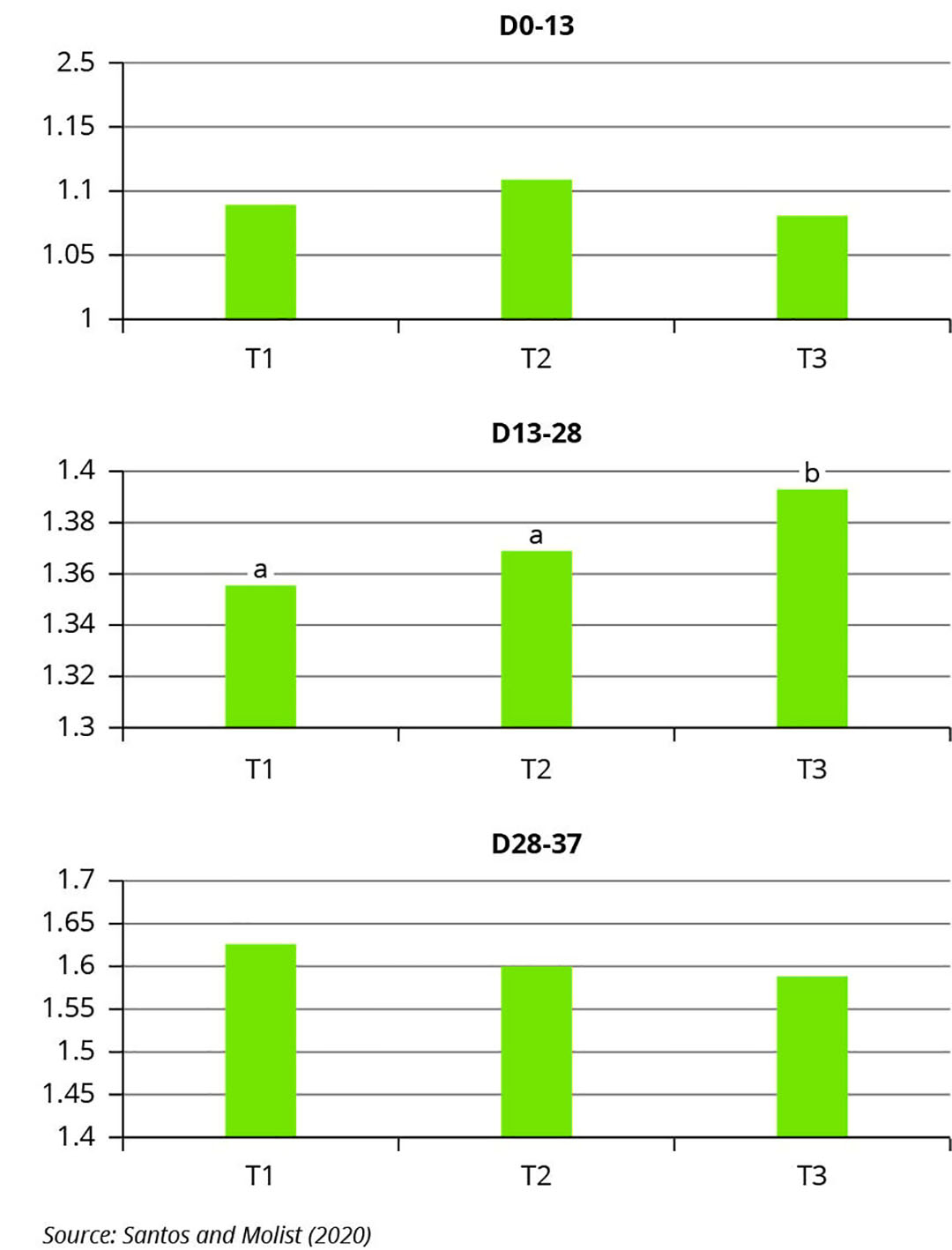Diets containing high DON levels impair broiler performance

Among the mycotoxins affecting livestock production, the Fusarium mycotoxin deoxynivalenol (DON) appears to be one of the most important ones.
Many studies show the negative impact of DON in broiler chickens when the level of this mycotoxin is far above what is recommended by EU guidelines, i.e. 5,000 µg/kg (EC 576/2006).
More recently, it has been demonstrated that dietary contamination with 2,500 µg/kg DON is enough to impair bone mineralisation in chickens (Keçi et al., 2019). Also, in a longitudinal study, Kolawole et al. (2020) showed that more than 50% of diets used to feed broilers contain the DON derivatives 3-Acetyl-DON (3-Ac-DON) at mean concentrations of 42.1 µg/kg. Both 3 and 15 c-DON are often found in feedstuffs contaminated with high DON levels because 3+15 Ac-DON is produced by the same Fusarium which produces DON.
Figure 1 – FCR of broiler chickens fed diets containing different levels of DON and 3+15 Ac-DON.

The maximum acceptable levels of DON in cereals and cereal by-products used for feed production is 8,000 µg/kg, while for maize by-products it is 12,000 µg/kg (EC 576/2006). Therefore, under realistic conditions, a maize-based diet prepared with a high inclusion level of such a contaminated grain will have a final DON level of approximately 4,000 µg/kg or less.
To properly determine the risks of losses and action that needs to be taken, it is necessary to evaluate the effects of naturally contaminated diets containing DON levels close to those observed in practice. In a recent study performed by SFR, broiler chickens were fed diets naturally contaminated with DON and its derivatives at 3 different levels (~ 1,700, 2700 or 3,500 µg/kg for DON; and ~ 30, 45 or 65 µg/kg for 3+15 Ac-DON).
FCR
During the starter period, the worst FCR was observed when broiler chickens were fed the diet containing ~2,700 µg/kg DON, but it is important to note here that during this period birds have a lower feed intake and therefore consumed a small amount of the diet. Most importantly, diets with the highest tested level, i.e. ~ 3,500 µg/kg, combined with 3+15 Ac-DON caused the most deleterious impact on the FCR of broilers chickens during the grower period. Although no differences in FCR were observed in the finisher or overall feeding periods, one must bear in mind that related economic losses cannot be excluded. For instance, other sources of stress in the gut could result in a negative impact on birds’ performance.











